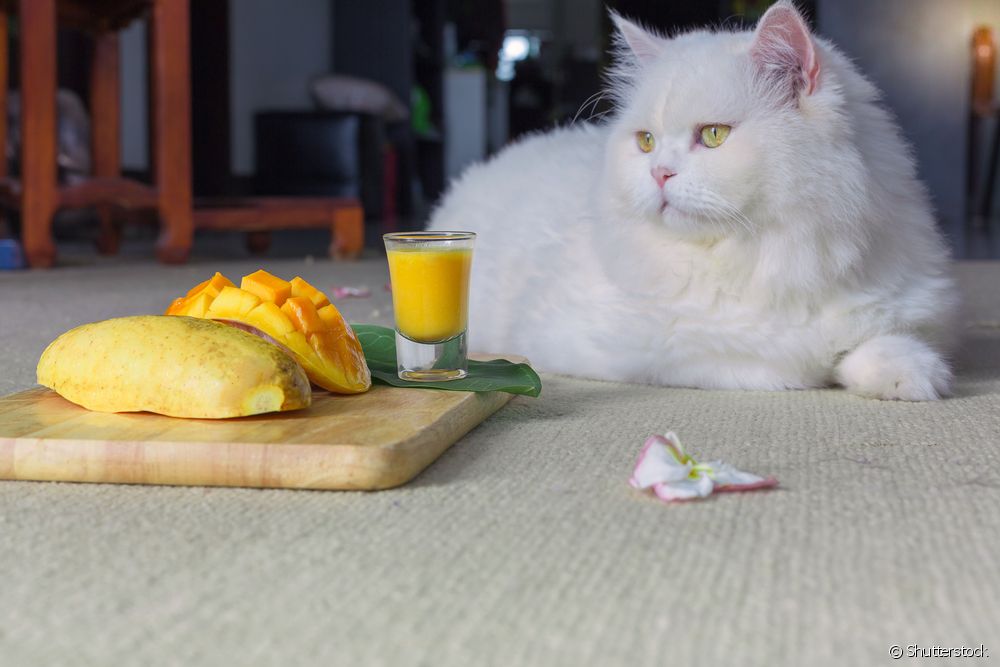Can cats eat mango? Find out!

Table of contents
Feline food is full of peculiarities, and many people feel insecure before offering fruit to cats. In fact, it is important to research what foods are allowed or forbidden for our pets, and with mango for cats this is no different. Any slip-up can cause food poisoning, and no pet parent wants that to happen. But can you give mango to cats?How should mango for cats be offered and what care should be taken with the food? To answer all these questions, just keep reading!
See_also: The dog breeds with the weakest biteCan cats eat mango or not?
Yes, cats can eat mango! If you are thinking of including the food in your pet's diet as a snack, there is no problem. The fruit is not harmful to kittens. Despite having vitamin C in its composition, mango for cats in general does not make much difference, since these animals are able to synthesize the vitamin without the need for food supplementation.
Even if it is not the most suitable food, cats can eat mango from time to time. They are usually attracted by the smell of food, so if you are eating the fruit and your little friend suddenly appears asking for a small piece, it is free! The only attention, however, is with the amount offered. To give mango to cats, a small cube of the peeled fruit is sometimes enough forsatisfy your four-legged friend.
Mango for cats: know the necessary precautions before offering the fruit
When your cat eats fruit, it is important to take some care with the way the food is prepared. In the case of mango for cats, for example, it is recommended to remove the peel and core and control the amount of food. To avoid mistakes, just follow these tips:
- Peel the mango for cats. As the peel is thick and has a very bitter taste, your kitten will not like it. In addition, it is usually in this part that pesticides are concentrated, so the ideal is to remove it completely.
- Remove the core from the mango for cats. Otherwise, the cat may end up choking on pieces of the lump or even swallow a part, which can cause an intestinal obstruction.
- Offer cats a small amount of mango. Excess fructose can harm the health of felines, so the ideal is always to offer very little fruit. The ideal is to cut into small cubes and not exceed the limit of 5 cubes with an approximate size of 2 centimeters for adult cats. The frequency should be a maximum of once a week.

Cat eats fruit! See other options that can be included in the feline menu
In addition to mango, did you know that cats can eat pears and several other fruits? Yes, that's right: although felines prefer a more protein-rich diet, fruits for cats are also a good choice of snack for special occasions (in addition to being very nutritious!). However, before offering or including any food in your pet's diet, make sure it is not harmfulKnowing what your cat can and can't eat is key to taking care of your friend. Among the released options, we can highlight:
- Pear
- Apple
- Melon
However, it is worth remembering that some fruits - such as grapes and avocados - are strictly forbidden for cats because they can cause a number of problems in the feline organism.
See_also: 6 reasons why dogs bark at nothing

